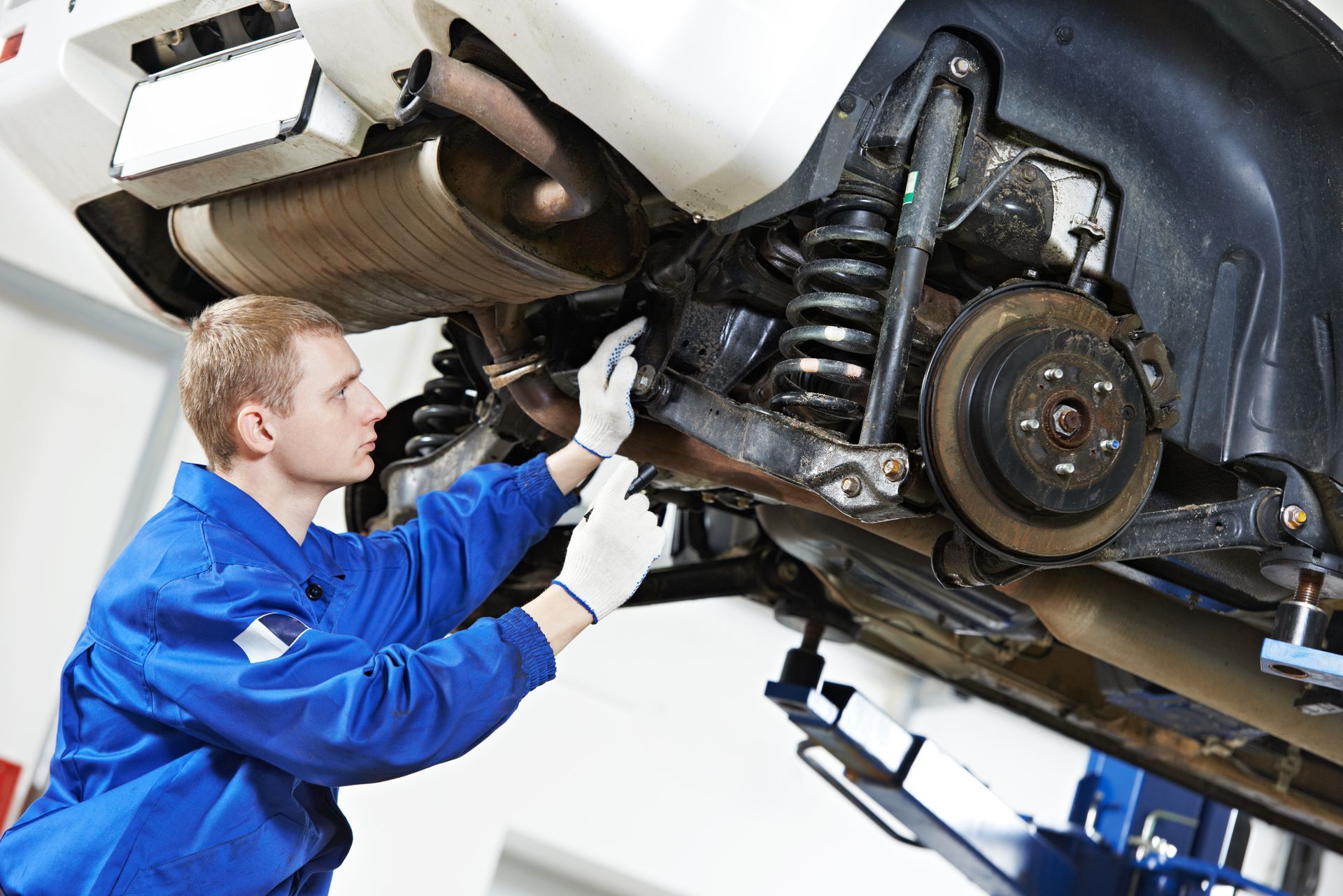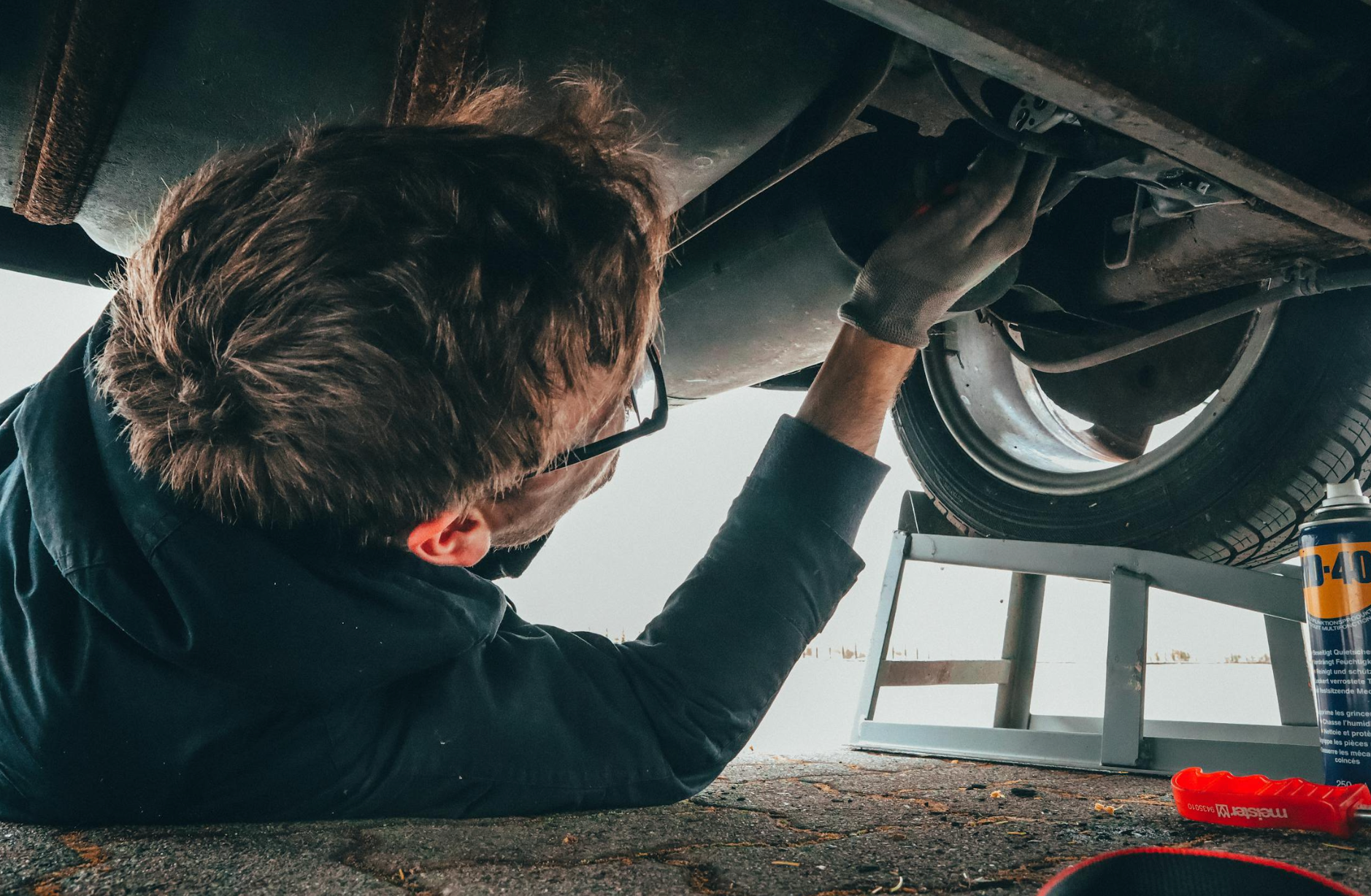Loading ...
Missing business hours data / Error occurred while getting the data.
Loading ...
Missing business hours data / Error occurred while getting the data.
When to Worry About a Fluid Leak Under Your Vehicle
February 28, 2025
Finding a puddle under your car can be frustrating, especially if you’re unsure whether it’s a harmless drip or a sign of a serious problem. While some leaks are normal, others can indicate major issues that could lead to breakdowns or safety hazards. The key to knowing when to worry is understanding what type of fluid is leaking and what it means for your vehicle’s health.
When a Leak Is Nothing to Worry About
Not all leaks are cause for alarm. One of the most common and harmless puddles you’ll see under your car is condensation from the air conditioning system. On hot days, moisture from the A/C evaporator drips onto the pavement, creating a clear, odorless puddle near the front passenger side. Another normal occurrence is water dripping from the exhaust, particularly when starting your car on a cold morning. These puddles are just condensation and are nothing to be concerned about.
Coolant Leaks Can Lead to Overheating
Coolant, also known as antifreeze, plays a critical role in maintaining your engine’s temperature. If you notice bright green, orange, pink, or yellow fluid under your car, you may have a coolant leak. These leaks can result from a cracked radiator, worn-out hoses, or a failing water pump.
A coolant leak can quickly lead to engine overheating, which can cause severe damage if ignored. You might also notice a sweet smell coming from the engine bay. If your temperature gauge is rising or you’re frequently adding coolant, it’s time to get your car inspected.
Oil Leaks Can Cause Engine Wear
If the fluid under your car is dark brown or black with a greasy texture, it’s likely engine oil. Oil leaks can come from worn gaskets, a loose oil drain plug, or a failing oil pan seal.
Low oil levels can lead to poor lubrication, which increases friction and causes engine components to wear prematurely. You may also notice a burning oil smell while driving. Even if an oil leak seems minor, ignoring it can result in expensive engine repairs down the road.
Transmission and Power Steering Fluid Leaks Affect Performance
Transmission fluid is typically red or dark brown, and if it’s leaking, you might experience delayed or rough shifting, slipping gears, or overheating transmission temperatures. A transmission leak often comes from worn seals, a cracked transmission pan, or damaged cooler lines.
Power steering fluid leaks are also a common issue. This fluid is usually reddish or amber-colored, and if it’s leaking, you might notice difficulty turning the steering wheel, stiff steering, or whining noises when turning. A power steering leak could stem from a damaged hose, a faulty pump, or a failing steering rack.
Brake Fluid Leaks Are a Serious Safety Concern
One of the most dangerous leaks to watch for is brake fluid, which is clear to yellowish and has an oily texture. Brake fluid is essential for your braking system, and a leak can lead to reduced stopping power, a soft or spongy brake pedal, or even brake failure.
Brake fluid leaks can come from damaged brake lines, a failing master cylinder, or worn-out seals in the braking system. If you suspect a brake fluid leak, do not drive your car—have it towed to a repair shop immediately.
How to Tell If the Leak Is Serious
The easiest way to determine if a leak is problematic is by checking the color, consistency, and smell of the fluid. Clear, odorless puddles are typically harmless condensation, while brightly colored or oily fluids indicate potential problems.
The location of the leak can also provide clues. If you find a puddle near the front of the car, it could be engine oil, coolant, or transmission fluid. A leak near the rear of the car might be differential fluid or fuel. If you're unsure what’s leaking, placing a piece of cardboard under the car overnight can help identify the fluid.
Not sure what’s leaking under your car? Visit
The Garage Automotive Solutions in Greeley, CO, for a full fluid
inspection and expert repairs. Call today to schedule your appointment!

Loading ...
Missing business hours data / Error occurred while getting the data.
Loading ...
Missing nap lines data / Error occured while getting the data.









